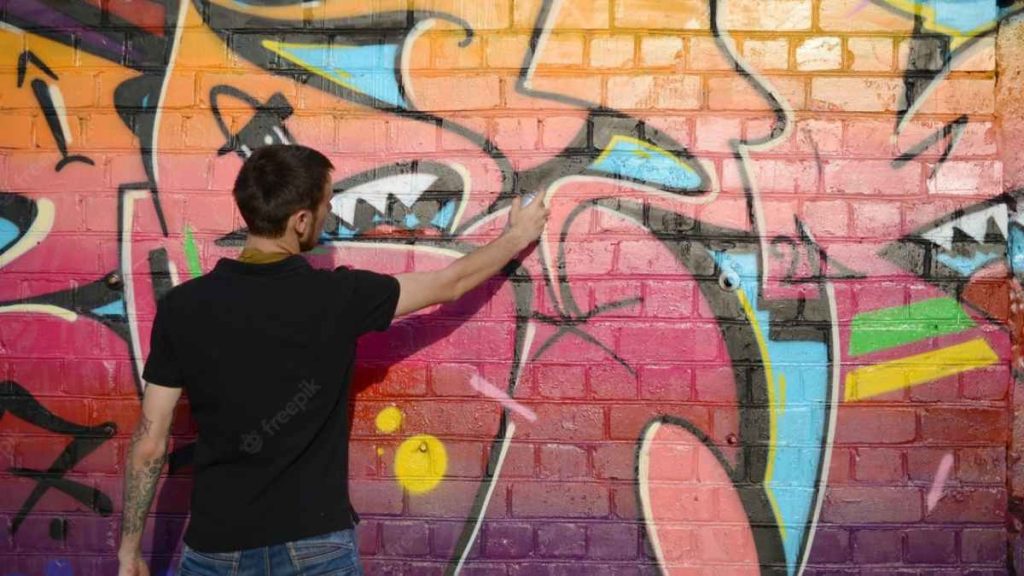Graffiti has arisen as a major problem for communities in recent decades (contrary to perception, graffiti is not exclusive to urban areas, and motives vary). Graffiti may be a nightmare or a tolerable menace, depending on your desire to be proactive in dealing with the problem.
Though crime prevention tactics are likely to improve your chances of avoiding graffiti and should be explored, remember that graffiti is not an issue that can be handled or discouraged via the legal system. Like other types of vandalism, graffiti-related acts are seldom captured or even recorded. You are dealing with this problem on your own.
Anti-graffiti coatings have evolved into a simple and reliable method of preventing graffiti in the first place. Here are the seven facts you should know about the anti-graffiti coating.
1. What Is Anti-Graffiti Coating?
Anti-graffiti paint is a sealant put on the surfaces of your building to protect them against graffiti damage. Spray paint, markers, and other tagging and graffiti items are all protected by protective coatings.
Anti-graffiti coatings are classified into two types:
Long Life Protective Coatings
A two-pack polyethene foundation is used in these protective coatings. The layer forms a hard surface that permits the use of specific cleaning solutions without causing damage to the original cover. This solution swiftly dissolves and removes graffiti. One of the most notable advantages of this anti-graffiti coating is that it has a ten-year lifetime when properly maintained and cleaned.
Sacrificial Coatings
The graffiti removal procedure is made easier with this coating. The excess layer may be removed with high-pressure hot water without contacting the surface material. After the graffiti has been cleaned, a fresh sacrificial coating must be sprayed for further protection.
2. Who May Benefit From Anti-Graffiti Paint?
Anti-graffiti coatings might help anyone who regularly deals with graffiti damage. Anyone from a homeowner to a business building owner to city councils and other government agencies may use it to cut graffiti cleaning expenses and preserve surfaces in the long run.
3. Where Are Anti-Graffiti Coatings Useful?
It may be applied to almost any surface. Professionals have successfully applied protective coatings to wood, plastic, masonry, cement, and metal surfaces. When done properly, the layer looks like any other paint job. Transparent coatings may also be employed when the surface should retain the visual qualities of the substance.
Moreover, protective coatings are an excellent preventative measure for parks, parking lots, garages, schools, and any other surface vulnerable to damage.
4. When Can You Use Anti-Graffiti Paint?
The second layer of protection will always provide peace of mind. Nonetheless, there are several especially susceptible targets where anti-graffiti coatings might be quite beneficial:
- Low oversight areas
- Bare and large surfaces
- Property walls that face highways or freeways
- Light coloured walls
If you don’t want to keep repainting the same area, applying a long-lasting protective coating is a good idea. Furthermore, if you have been the victim of graffiti vandalism, you might consider lowering the cost of future removal.
5. Who Can Use Anti-Graffiti Coatings?
Although anti-graffiti paint can be applied by anyone, it is best left to a professional graffiti commercial painting Perth service. There is a method that should be followed before painting any surface; the surfaces must be cleansed using pressure washing techniques before applying the protective layer.
Professional commercial painters Perth have been providing pressure cleaning and protective coating services in Perth for more years. They would be pleased to assist you if you are dealing with regular graffiti assaults on your property.
6. How Do Protective Coatings Work?
A protective film is placed on any surface, forming a barrier that keeps spray graffiti vandals at bay. Once applied, the protective film will save you time and money while avoiding lasting harm to your property in the event of an assault.
If you are still getting familiar with anti-graffiti products, consulting with a professional graffiti service can help you make the optimal product decision for your job.
7. Is There A Downside To Using Anti-Graffiti Paint?
Anti-graffiti paint, like any other product, has significant drawbacks.
To begin with, it only lasts around four years, meaning you’ll have to repaint your building at least once. Another problem is that certain anti-graffiti paints have a strong odour; too much paint might make the surface more difficult to clean.
While there are some drawbacks to using anti-graffiti paint, it is an effective way to prevent graffiti from appearing on your property, especially if you live in a graffiti-infested area. Anti-graffiti paint is a way to reduce the amount of graffiti on your building while also keeping your overall maintenance costs low.
Conclusion
Graffiti must be removed as soon as possible – preferably while the paint is still wet! There are many reasons to remove graffiti as quickly as possible, but the most important is that it looks terrible on your property!
The longer it remains on the surface, the more difficult it is to remove.
The anti-graffiti coating is an excellent paint option for anybody looking to build a barrier coating that keeps graffiti at bay.




